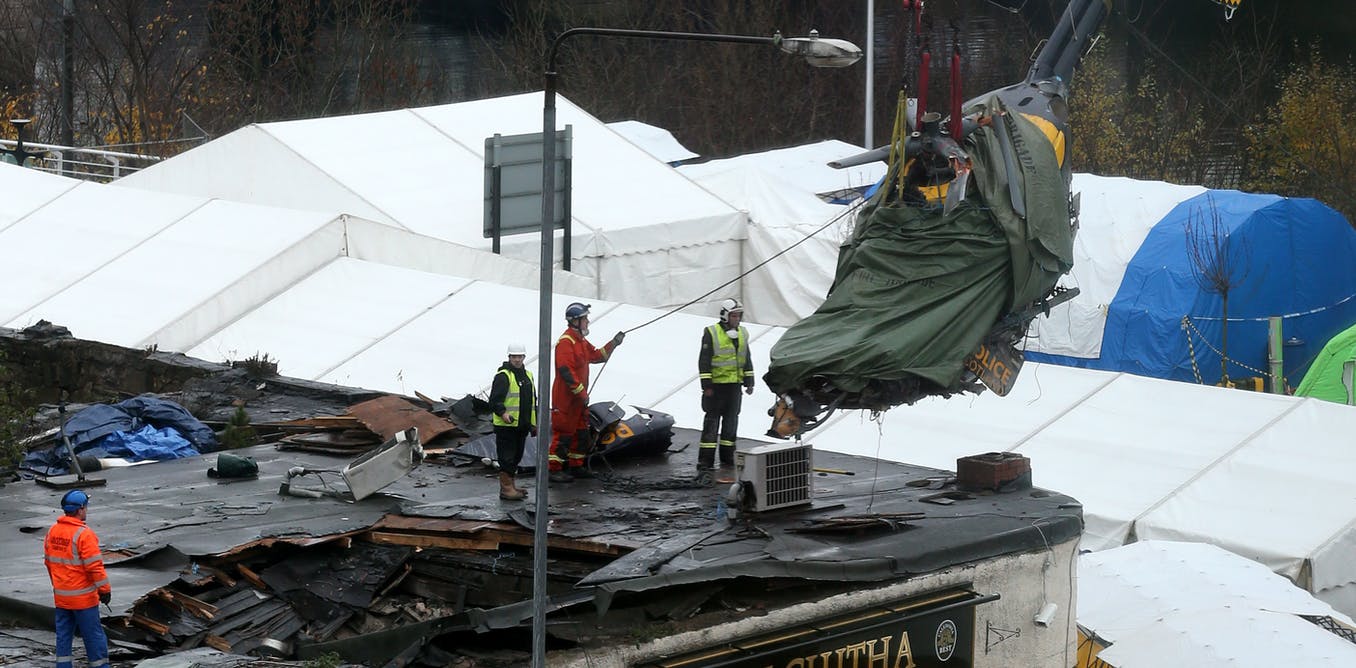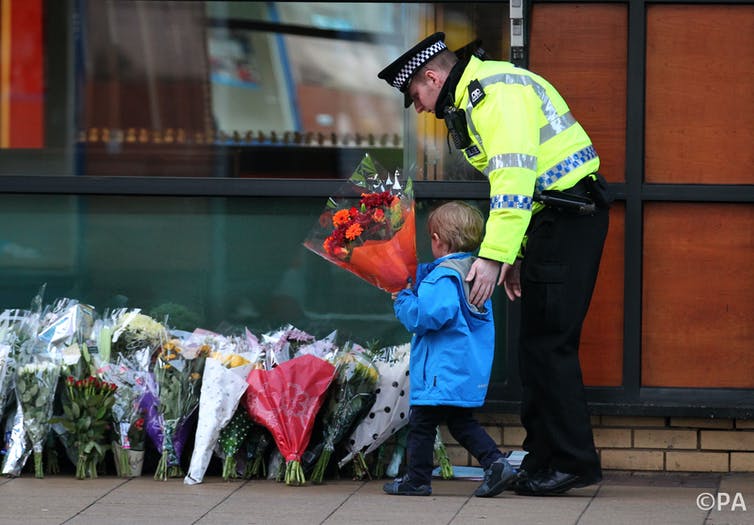Picking up the pieces after Glasgow’s helicopter disaster

Removing the debris is just the first step. Andrew Milligan/PA
Following any aircraft accident, the first priority has to be the rescue of injured people and the recovery of those who may be deceased. Inevitably, this may mean evidence that could be used to investigate the accident may be damaged or destroyed. In the case of the police helicopter accident in Glasgow, this will be a particular challenge.
Under Scottish law, the police have primacy at the accident site and will need to investigate the cause of the fatal accident on behalf of the Procurator Fiscal. This investigation will run in parallel with the technical investigation. Normally, if the police suspect a deliberate criminal act has been committed they will lead the investigation, assisted by the Air Accidents Investigation Branch (AAIB) of the Department for Transport. If there is no reason to suspect a crime, the AAIB will lead the investigation.
The investigation will focus on all of the available evidence including the physical site, witness evidence and air traffic control recordings. As the aircraft was not carrying either a cockpit voice recorder or digital flight data recorder, flight recorder specialists will attempt to recover electronic information from the helicopter systems that may have non-volatile memory. This is often a long and painstaking process to avoid data loss during recovery.
Operations investigators will look at the pilot’s training and experience, and what type of flight was being conducted at the time of the accident. Engineering inspectors will look at the physical evidence to establish as much information as possible about the aircraft, such as whether the engines were producing power, whether the fuel was within specification and whether there were any mechanical faults which might have contributed to the accident. They will also examine the maintenance history of the helicopter to see whether that can provide useful information.
Aviation safety is extremely good. It’s important to remember that accidents are complex and rarely stem from a single cause. In general, crucial systems are designed with redundancy so that a single failure will not result in the loss of the aircraft. On a helicopter like this, that may be as simple as making fuel feeder tanks different sizes so that both engines cannot run out of fuel at the same time or as complex as having independent controller computers comparing results and reacting to any discrepancies.
Investigators will also try to corroborate any evidence they find rather than relying on a single source to guide the investigation.

Looking out for the bereaved is a crucial part of any investigation.
Andrew Milligan/PA
There is a considerable amount of work to be done in the investigation before we can begin to understand the possible cause of this accident, and the investigation may well take many months or even years to complete. But as the investigation progresses, if any information is discovered that has flight safety implications for the rest of the fleet this will be relayed back to the aviation community as quickly as possible.
Alongside this, the AAIB will talk to families of the deceased and keep them informed of the progress of the investigation. They will also try to answer their questions where possible, in order to try and help the bereaved deal with their loss as best they can.

The authors do not work for, consult, own shares in or receive funding from any company or organization that would benefit from this article, and have disclosed no relevant affiliations beyond their academic appointment.






